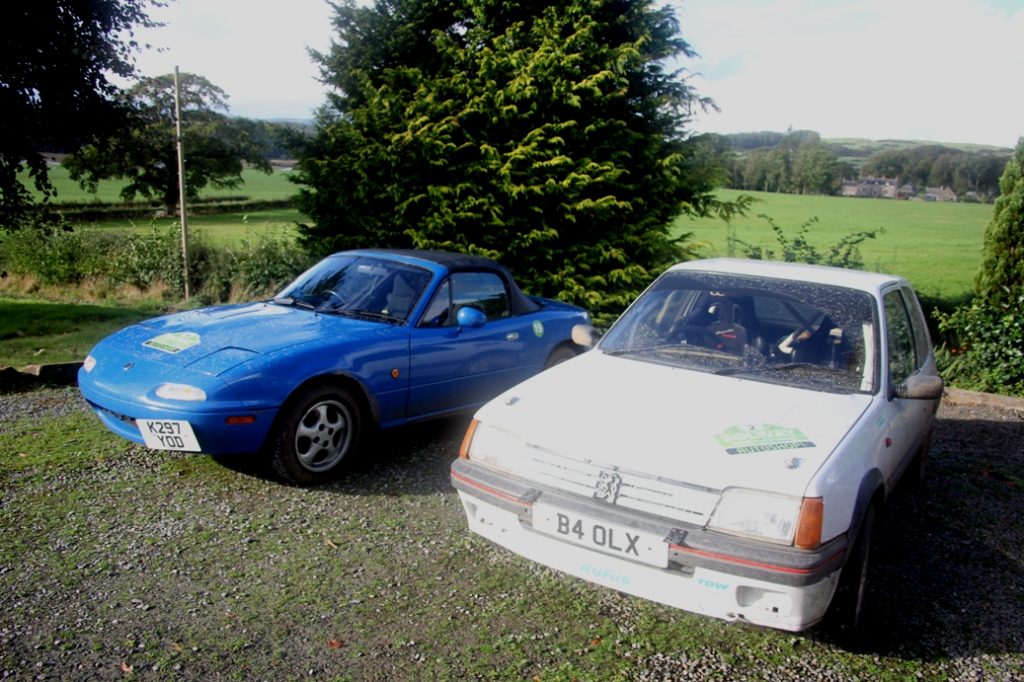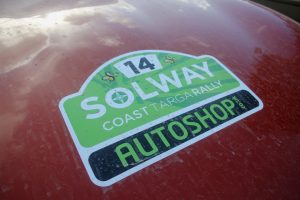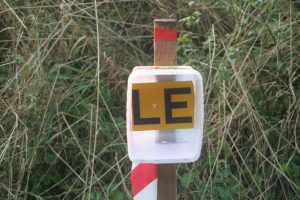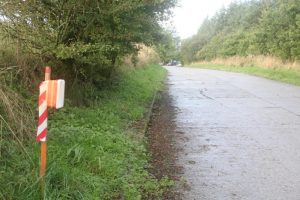… Targa rallying …
If navigational road rallying is too difficult and forest stages rallying is too expensive, there is an alternative – Targa rallying. The navigation is generally much simpler and a road car is all you need to compete.
There has been a noticeable increase in interest in this branch of the sport over recent times, but folk still don’t know too much about it. It doesn’t enjoy a high profile, even amongst motorsport fans, but for those who participate it’s the best on fun four wheels.
Navigation is usually straightforward with simple to follow instructions with an easily understood timetable, the idea being to keep folk in the event rather then put them out. In fact, the navigation is so simple that even a man could cope – so ladies, get your driving gloves on! There are of course some events which require a little more mental agility from the navigators, but anyone contemplating such an event can pick and choose to suit experience.
The real appeal of these events are the Driving Tests, usually held on private ground and against the clock although there are some on-road sections where input is required from both crew members, but it is the Driving Tests which are the biggest attraction.
Think autotest but on a grander scale. Some of these timed tests require a navigator to direct his/her driver because simply remembering the twists, turns, loops and spins would overheat that great lump of mince between most folks’ ears. It really is a two person affair. On the longer tests, speeds are controlled by means of introducing slaloms, chicanes, braking tests and reading Code Boards to slow down progress.
If Code Boards sound a bit innocent, these are sited by the road side usually on the quicker sections to keep average speeds down. These require crews to stop or at least slow down to read them and note them on their Time Cards. Usually a letter or two, or a couple of numbers or symbols, but failure to record them accurately incurs a time penalty.
Organisers can be a pretty crafty bunch and to stop it being too easy, the codes are inserted inside a container like a biscuit tin or ice cream carton so that crews have to slow down to see inside while some of the more devious organisers have these codes facing forward in the direction of travel so that crews really have to stop so they can look back and see inside.
As for the rest of the test that can be conducted at as high a speed as the driver’s skill and his/her charger of choice will allow. Tyres can take a beating with slides, skids, slithers and hand brake turns spicing up the mix, so the general rule is, buy cheap tyres – too much grip ruins the fun.
Over the past two years, the Mull Targa Rally kept rallying alive on the Island of Mull during recent bleak times. The first year there wasn’t much local interest, but having witnessed the fun, more local folks had ‘invested’ in suitable machinery for its return i.e. sourcing cheap recycling-centre dodgers that were still fit enough to pass an MoT.
Some of the Mull Targa tests use forest roads but some stretches of tarmac roads were also used. Other tests were held in car parks, works yards and quarry floors so a sumpguard is advisory but often not essential.
Knowing what the Mull tests looked like, begged the question, what does a Targa event on the mainland look like?
To answer that a visit was made at the weekend to the Solway Coast Targa Rally, supported by the Autoshop.co.uk, in the deep south west. Organised by H.U.R.F. (the Haugh of Urr Rally Factory) and supported by a stalwart cast of two dozen members of Solway Car Club, this event was a serious hoot from start to finish.
The route totalled some 50 miles and included 16 Driving Tests in its 5 hour duration and that included an hour off for lunch.
Crews gathered at the welcoming Arden House Hotel in Kirkcudbright (I’m going back for a steak pie lunch!) from 8.00am for a bacon roll and a tea before the 10.00am start. The first loop of 8 tests at Dundrennan preceded the lunch halt which comprised a bowl of soup and a roll and then on to the next loop of 8 different tests.
The last of the crews got home by around 3.30pm, the prizegiving was held at 4pm and those who had a distance to travel were on the road home pretty smartly after that while others stood around, socialised and chatted. And don’t go thinking it’s all social, there’s a bit of competition along the way. For instance, one ex-schoolboy (Scott, 7th o/a) was determined to beat his ex-school teacher (Ron, 18th o/a) – and he did. A perfect end to a perfect day, even if it did rain a bit. Well, quite a bit really.
This being a H.U.R.F. production the paperwork and Roadbook were impeccable and only a numpty could get lost or take a wrong direction. Those who did incur a WD were indeed numpties (You know who you are Allan – listen to Alice the next time!) and probably couldn’t find their way out of a room with one door.
A typical test was 1500 yards long. Just after the Start there was a slalom through 3 cones, then a Code Board half up a straight which led into a triangle junction which had to be hand braked round the three corners, but if you weren’t very good, just driving round tidily was quicker than some of the attempts witnessed! Then it was off up the hill into a chicane at the top, and another slalom before a halt astride the Stop line. The Marshall then shouted (Covid rules) the time at the navigator and/or showed him/her the watch to record the time. On to the next test.

Other tests were more technical ensuring navigators had to call out the sequence of manoeuvres which had to be attempted.
The four morning tests were repeated once and the four afternoon tests were also repeated once, giving 16 tests in total. Other events may differ, but then that’s all part of the appeal.
Cars entered on the day included a 1957 Triumph TR3, Proton Satria, MG ZR, Clio, a dose of Peugeots and a flock of Mazda MX5s. There was also an elderly Nissan Micra in the hands of a nutter (more on that later) but the wee Mazda sports cars seem to be the preferred weapon of choice – cos they come with an LSD as standard.

However, the fact that most of the cars entered were standard road cars should be a big incentive. That means that anyone who fancies a bit of automotive fun at the weekends doesn’t need an expensive, temperamental competition car locked up in their garage most weeks of the year. By all means have a decent family road car but a well chosen second car can double up as family transport as well as a weekend sporting thoroughbred for not too much money.
The rule is simple, two wheel drive and nothing bigger than a 4 cylinder engine with a maximum of two carburettor chokes (two single or one double). If you have a saloon car with an MS UK logbook which you use for road rallying or sprinting then the car will need carpets, rear seat and headlining fitted before it can contest a Targa.
And the bonus? Some events allow 14 year old (and above) navigators!
The Entry Fee which included breakfast and lunch was £90 per car, 20 quid for Insurance and an RS Clubman licence from MS UK is free.
Dundrennan proved to be the ideal venue for such an event with a variety of roads, suitable concrete and tarmac areas and close to an excellent Start/Finish venue. It also maintains the close association that Solway Car Club has with the MoD to ensure that when Covid rules are relaxed, the Solway Coast Rally can make a comeback. Fingers crossed.
So if you’re looking for a bit of automotive fun that’s relatively cheap, very enjoyable and as competitive as you want to make it, then consider a Targa. Or next time you want to take the wife/husband/partner/significant other/best friend/worst friend/neighbour from hell out for a drive, have a wee shottie at this.


